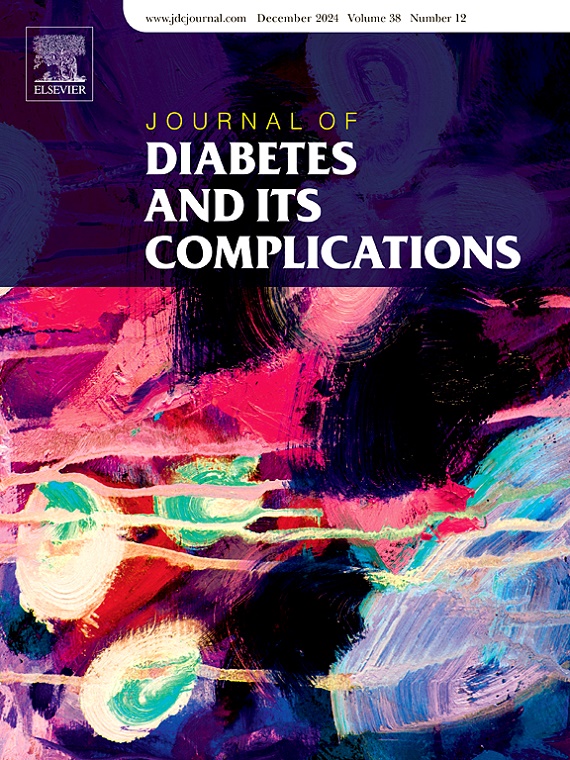Cost effectiveness of topical wound oxygen therapy for chronic diabetic foot ulcers
IF 3.1
3区 医学
Q3 ENDOCRINOLOGY & METABOLISM
引用次数: 0
Abstract
Aims
To estimate the cost effectiveness of Topical Wound Oxygen therapy (TWO2) for chronic diabetic foot ulcers.
Methods
A Markov model was created to estimate the cost effectiveness of TWO2 over 2 years. Clinical outcome probabilities were estimated from a recent multi-national randomised controlled trial. Diabetic footcare costs were estimated for the National Health Service in England, based on national cost collections, published literature and expert opinion. Model inputs were varied in sensitivity analyses.
Results
Base case results indicate that at a weekly TWO2 price of £650 for up to 12 weeks, total diabetic footcare costs over 2 years are £5038 lower for a patient treated with TWO2 than for standard care, and QALYs are 0.07 higher. Probabilistic sensitivity analysis estimates an 81 % likelihood that the treatment is cost effective at a willingness to pay threshold of £25,000 per QALY.
Conclusions
Base case results indicate that if the clinical outcomes in the RCT are replicated in routine care, TWO2 is a dominant treatment, with lower cost and improved outcomes relative to standard care. Sensitivity analysis shows a high probability that the treatment is cost effective at a willingness to pay threshold of £25,000 per QALY.

局部伤口氧疗治疗慢性糖尿病足溃疡的成本效益
目的评估局部伤口氧疗(TWO2)治疗慢性糖尿病足溃疡的成本效益。方法建立马尔可夫模型,估算2年TWO2的成本效益。临床结果概率是根据最近的一项多国随机对照试验估计的。根据国家费用收集、已发表的文献和专家意见,对英国国家卫生服务的糖尿病足部护理费用进行了估计。模型输入在敏感性分析中是不同的。结果基础病例结果表明,在每周使用TWO2价格为650英镑,持续12周的情况下,接受TWO2治疗的患者2年的糖尿病足护理总费用比标准治疗低5038英镑,质量年(QALYs)高0.07英镑。概率敏感性分析估计,在每个QALY愿意支付25,000英镑的阈值下,该治疗具有成本效益的可能性为81%。结论基础病例结果表明,如果RCT的临床结果在常规治疗中得到复制,则TWO2是一种优势治疗方法,相对于标准治疗,其成本更低,效果更好。敏感性分析表明,在每个QALY支付意愿阈值为25,000英镑的情况下,这种治疗很可能具有成本效益。
本文章由计算机程序翻译,如有差异,请以英文原文为准。
求助全文
约1分钟内获得全文
求助全文
来源期刊

Journal of diabetes and its complications
医学-内分泌学与代谢
CiteScore
5.90
自引率
3.30%
发文量
153
审稿时长
16 days
期刊介绍:
Journal of Diabetes and Its Complications (JDC) is a journal for health care practitioners and researchers, that publishes original research about the pathogenesis, diagnosis and management of diabetes mellitus and its complications. JDC also publishes articles on physiological and molecular aspects of glucose homeostasis.
The primary purpose of JDC is to act as a source of information usable by diabetes practitioners and researchers to increase their knowledge about mechanisms of diabetes and complications development, and promote better management of people with diabetes who are at risk for those complications.
Manuscripts submitted to JDC can report any aspect of basic, translational or clinical research as well as epidemiology. Topics can range broadly from early prediabetes to late-stage complicated diabetes. Topics relevant to basic/translational reports include pancreatic islet dysfunction and insulin resistance, altered adipose tissue function in diabetes, altered neuronal control of glucose homeostasis and mechanisms of drug action. Topics relevant to diabetic complications include diabetic retinopathy, neuropathy and nephropathy; peripheral vascular disease and coronary heart disease; gastrointestinal disorders, renal failure and impotence; and hypertension and hyperlipidemia.
 求助内容:
求助内容: 应助结果提醒方式:
应助结果提醒方式:


